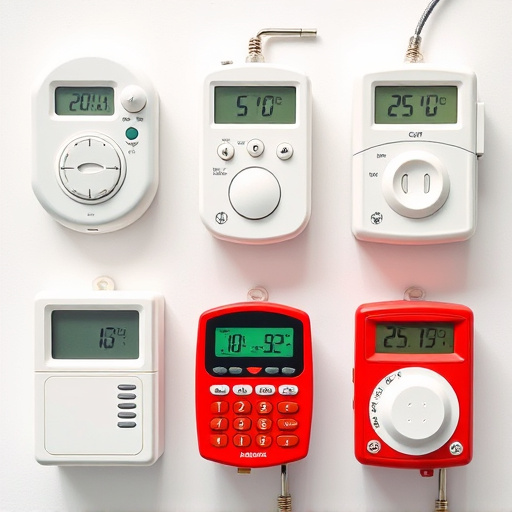Handheld personal protection alarms are compact devices offering immediate assistance with powerful, high-decibel sounds that deter threats and attract attention. With a small size for easy carrying, these alarms provide enhanced security in public spaces, with loud sounds heard up to 50-100 meters away. Key features include distinct Personal Alarm Sound, Coverage Area suitable for urban or rural settings, durability, water resistance, motion sensors, GPS tracking, and mobile app integration. Choosing the right alarm involves considering decibel levels (60-120+ dB), Coverage Area needs, portability, simple activation, and long-lasting battery life.
Handheld personal protection alarm devices have become essential tools for personal safety, offering peace of mind in an increasingly uncertain world. These compact yet powerful tools can be a game-changer in dangerous situations, providing a means of self-defense and attracting attention. In this article, we’ll explore the various aspects of these devices, from understanding their role and benefits to choosing the right one for your needs. We’ll delve into key features, optimal sound coverage areas, and critical factors to consider, ensuring you’re prepared and confident in any environment.
- Understanding Handheld Personal Protection Alarms: Their Role and Benefits
- Key Components and Features of Effective Personal Alarm Devices
- Determining the Ideal Sound Coverage Area for Your Safety Needs
- Choosing the Right Handheld Personal Protection Alarm: Factors to Consider
Understanding Handheld Personal Protection Alarms: Their Role and Benefits
Handheld personal protection alarms are compact devices designed to provide immediate assistance and deter potential threats in various situations. These alarms emit a powerful, high-decibel sound that can startle an assailant and draw attention, allowing users to escape or summon help quickly. Their compact size makes them easily portable, fitting comfortably in pockets or bags, ensuring individuals have access to personal protection whenever needed.
One of the key benefits is their ability to offer a sense of security in public spaces, whether during evening walks, outdoor activities, or while traveling. The loud personal alarm sound can cover an impressive coverage area, often heard up to 50-100 meters away, depending on environmental factors. This immediate response time can be crucial in emergency situations, providing individuals with a means of self-defense and a way to alert others for assistance.
Key Components and Features of Effective Personal Alarm Devices
Effective personal alarm devices are designed with key components and features tailored to provide users with a sense of security and safety when facing potential threats. One of the most critical aspects is the loud and distinct Personal Alarm Sound, which can startle an attacker and draw attention, allowing individuals to escape or alert others nearby. The Coverage Area of these alarms is another vital feature; they should be capable of emitting a powerful signal across a significant distance, ensuring that help can be summoned promptly from surrounding areas.
Additional features include easy-to-access buttons for immediate activation, durable and lightweight design for portability, water resistance to accommodate outdoor activities, and various triggering mechanisms such as motion sensors or vibration alerts. Some advanced models even offer connectivity options like GPS tracking and integration with mobile apps for real-time monitoring and location sharing, enhancing the device’s effectiveness in emergency situations.
Determining the Ideal Sound Coverage Area for Your Safety Needs
When choosing a handheld personal protection alarm, understanding the ideal sound coverage area is paramount for your safety. These devices are designed to attract attention and deter potential threats through loud, piercing sounds. The range of these alarms varies significantly, from around 60 decibels (dB) for compact models suitable for travel, up to 120 dB or more for powerful, long-range personal alarms ideal for outdoor activities or high-risk environments.
Consider your typical surroundings and the level of protection you require when determining the necessary sound coverage area. Urban settings with background noise may necessitate a higher decibel level to ensure your alarm is heard above the hustle and bustle. Conversely, in quieter rural areas, a lower-decibel alarm might suffice while still providing adequate warning. Always select an alarm that meets or exceeds industry standards for personal safety alarms, ensuring it will effectively alert bystanders and potentially deter attackers within your desired coverage area.
Choosing the Right Handheld Personal Protection Alarm: Factors to Consider
When selecting a handheld personal protection alarm, several key factors should guide your choice. Firstly, consider Personal Alarm Sound—opt for a device with a loud and distinct sound to ensure it attracts attention in an emergency. The Coverage Area is another critical aspect; determine how far the alarm’s signal can reach, whether in urban or rural settings, to guarantee maximum protection.
Additionally, weigh the device’s portability and ease of use. A compact design makes it easier to carry and store, while a simple interface ensures you can activate the alarm swiftly when needed. Battery life is also essential; look for devices with long-lasting batteries to avoid unexpected outages during critical situations.
Handheld personal protection alarm devices are powerful tools for enhancing individual safety, offering peace of mind in potentially dangerous situations. By understanding their key components, sound coverage areas, and choosing the right device based on specific needs, individuals can empower themselves to protect against threats effectively. Investing in a reliable personal alarm ensures you’re prepared and confident when facing unexpected challenges, making it a wise choice for anyone prioritizing their safety in today’s world.
